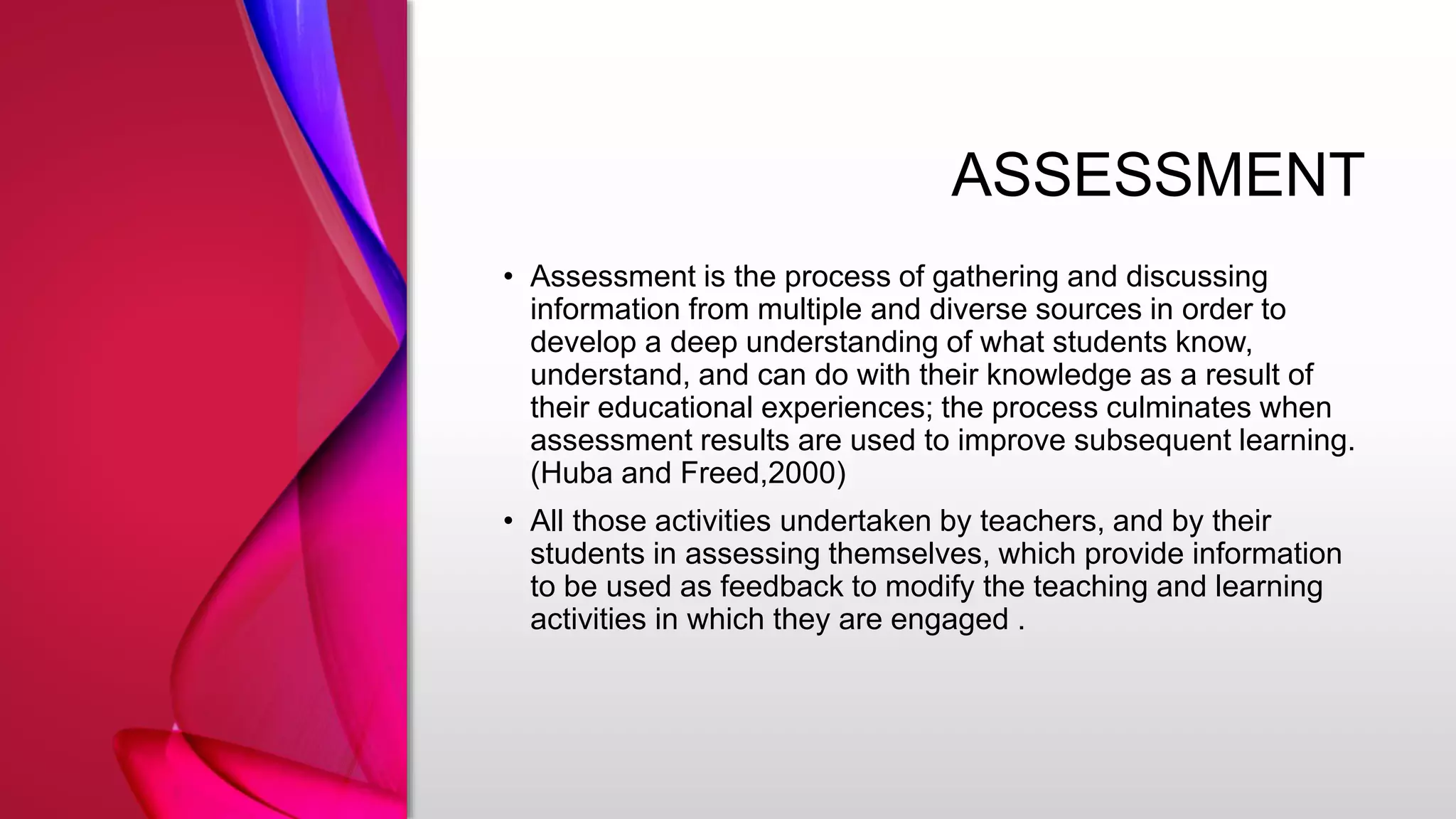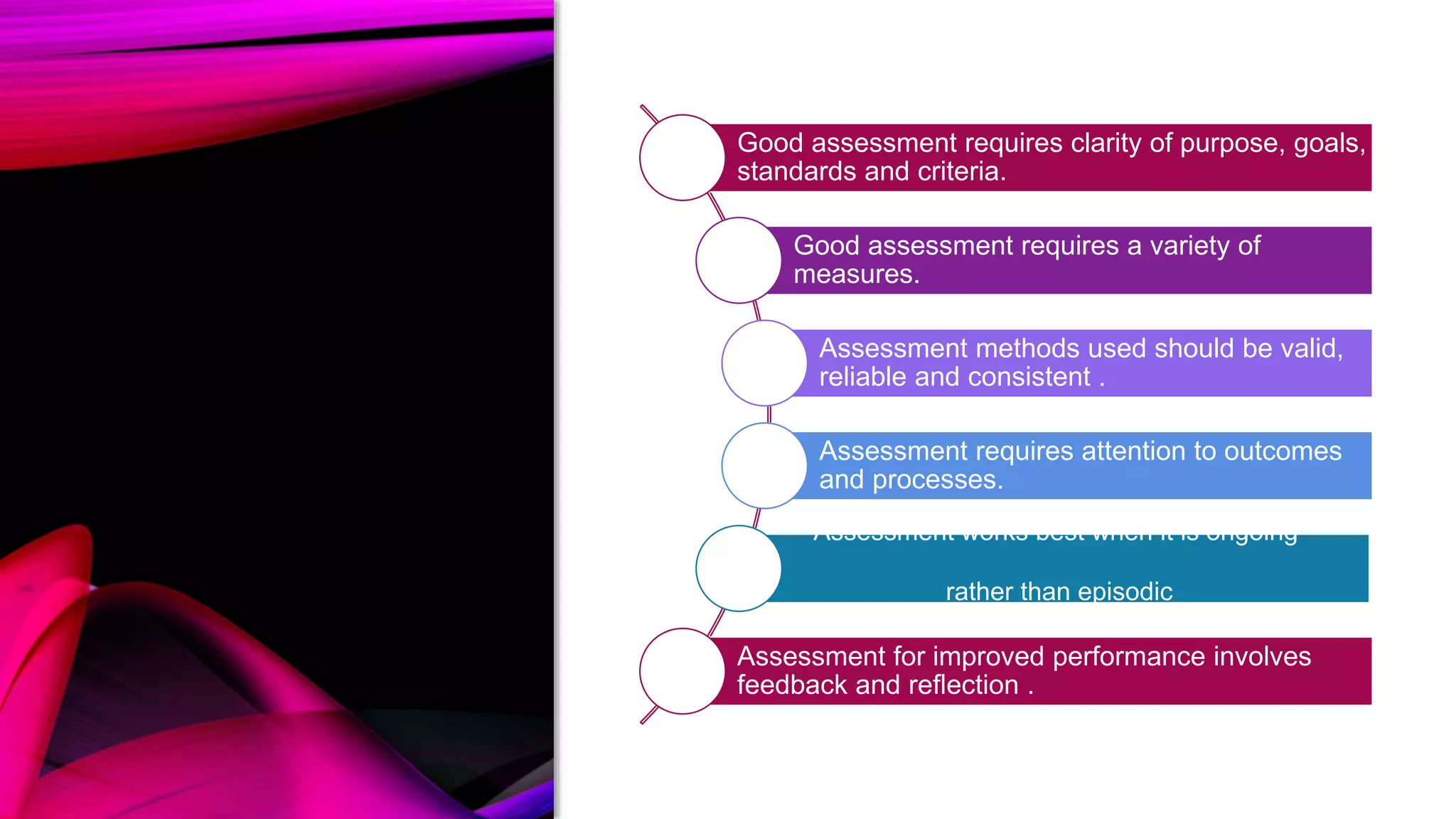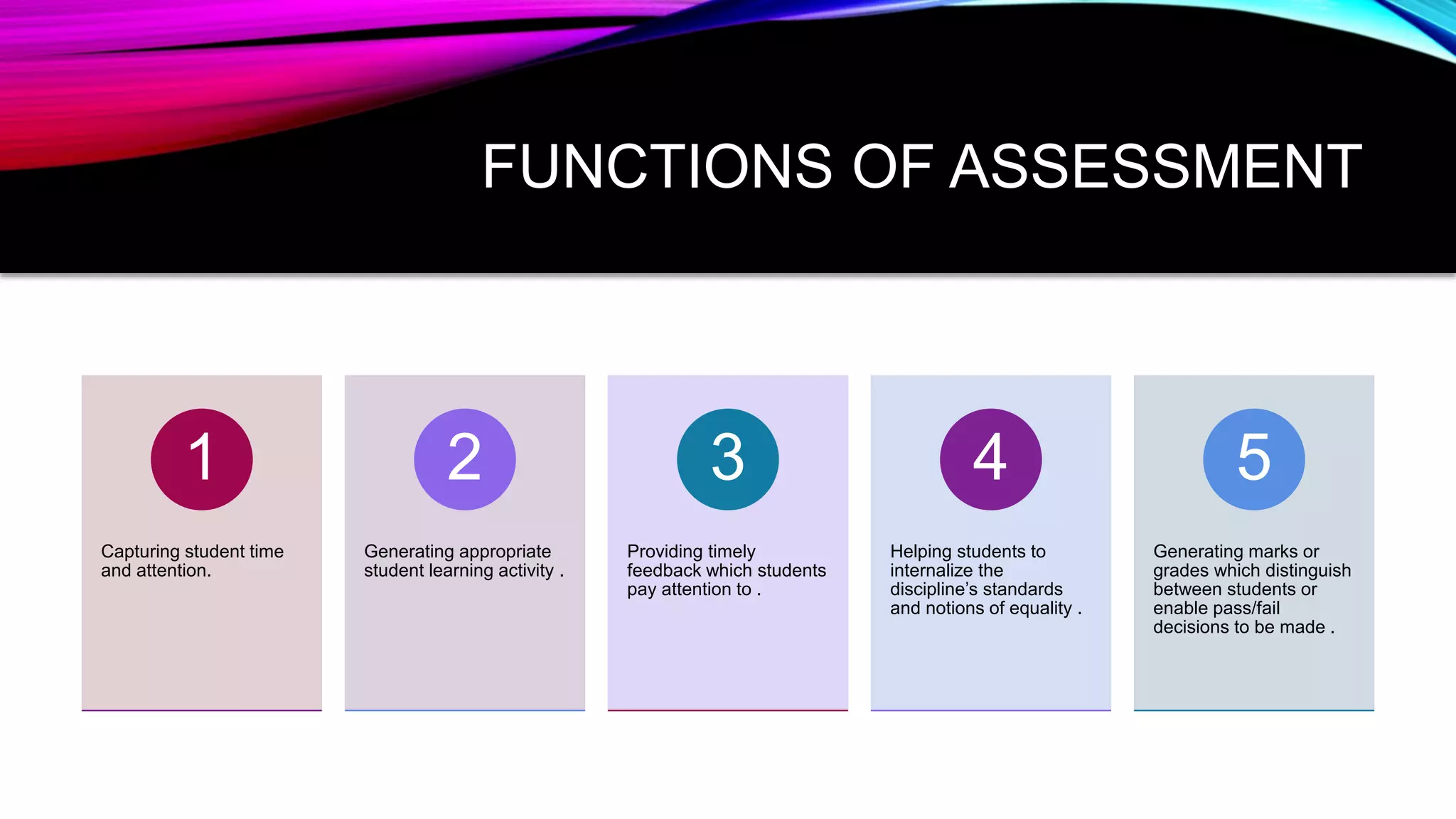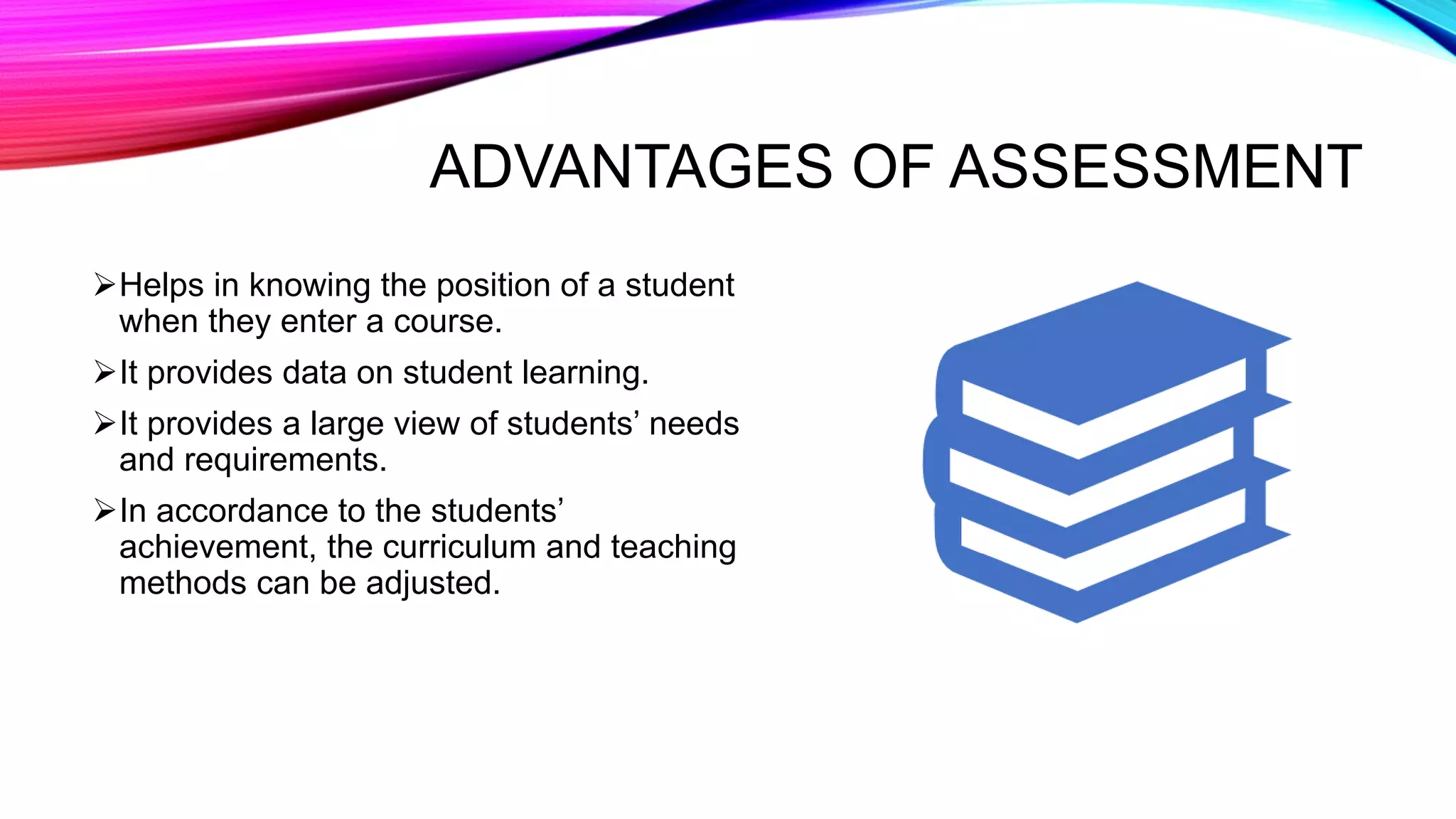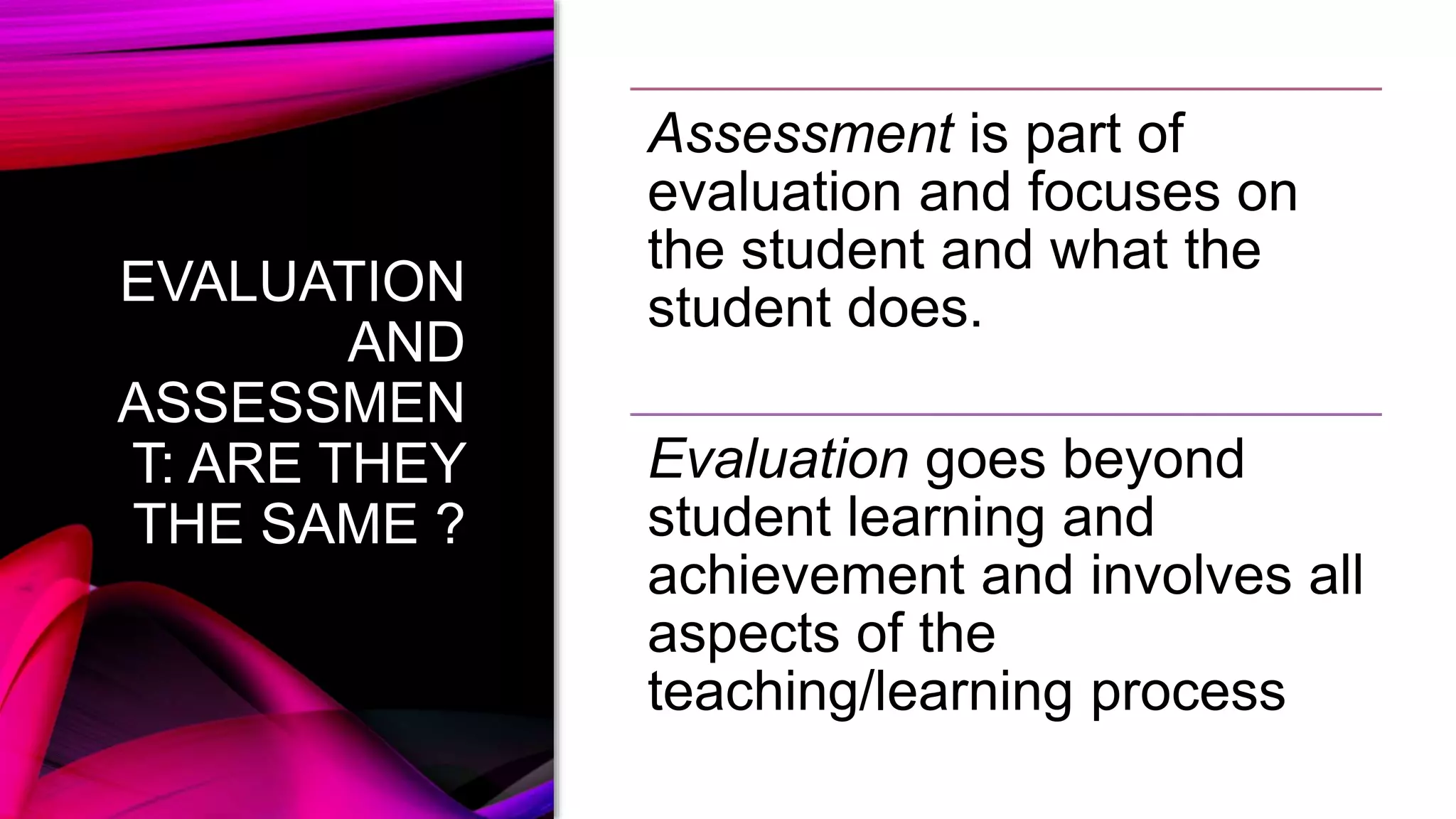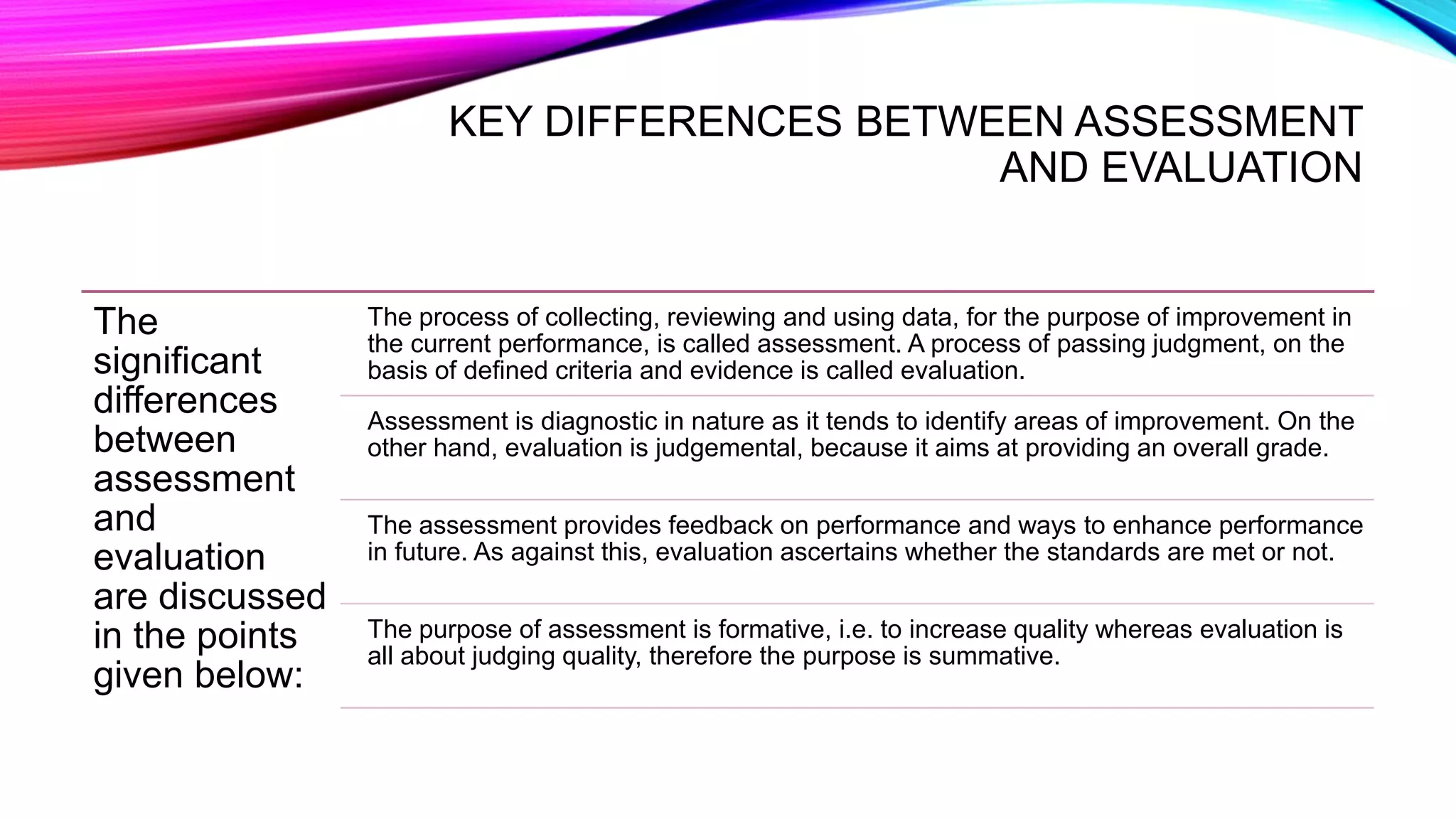This document discusses assessment and evaluation in education. It begins by defining assessment as the process of gathering information from multiple sources to develop a deep understanding of what students have learned. Evaluation is assessing programs, personnel, or organizations to improve effectiveness. The document outlines key principles of assessment such as improving student performance and understanding how students learn. It also distinguishes between formative and summative assessment. Overall, the document provides an overview of assessment and evaluation in education, their purposes, and differences between the two concepts.


